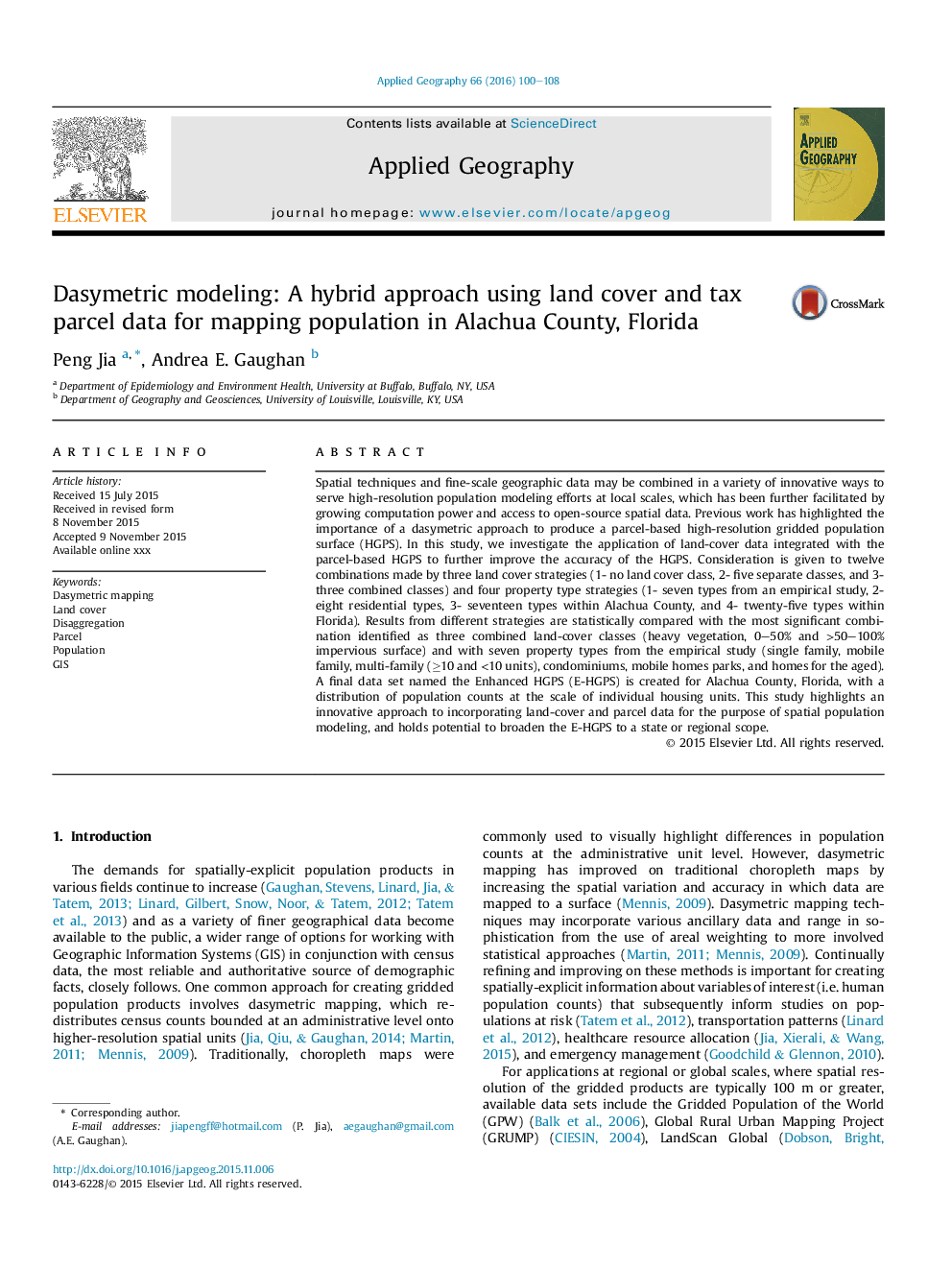| Article ID | Journal | Published Year | Pages | File Type |
|---|---|---|---|---|
| 6538422 | Applied Geography | 2016 | 9 Pages |
Abstract
Spatial techniques and fine-scale geographic data may be combined in a variety of innovative ways to serve high-resolution population modeling efforts at local scales, which has been further facilitated by growing computation power and access to open-source spatial data. Previous work has highlighted the importance of a dasymetric approach to produce a parcel-based high-resolution gridded population surface (HGPS). In this study, we investigate the application of land-cover data integrated with the parcel-based HGPS to further improve the accuracy of the HGPS. Consideration is given to twelve combinations made by three land cover strategies (1- no land cover class, 2- five separate classes, and 3- three combined classes) and four property type strategies (1- seven types from an empirical study, 2- eight residential types, 3- seventeen types within Alachua County, and 4- twenty-five types within Florida). Results from different strategies are statistically compared with the most significant combination identified as three combined land-cover classes (heavy vegetation, 0-50% and >50-100% impervious surface) and with seven property types from the empirical study (single family, mobile family, multi-family (â¥10 and <10 units), condominiums, mobile homes parks, and homes for the aged). A final data set named the Enhanced HGPS (E-HGPS) is created for Alachua County, Florida, with a distribution of population counts at the scale of individual housing units. This study highlights an innovative approach to incorporating land-cover and parcel data for the purpose of spatial population modeling, and holds potential to broaden the E-HGPS to a state or regional scope.
Related Topics
Life Sciences
Agricultural and Biological Sciences
Forestry
Authors
Peng Jia, Andrea E. Gaughan,
